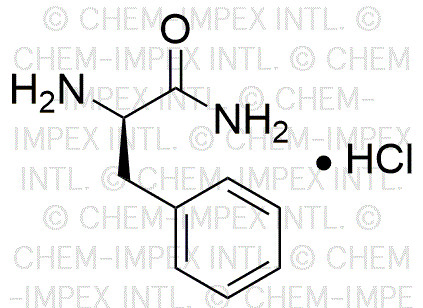D-Phenylalanine amide hydrochloride is widely utilized in research focused on:
- Pain Management: This compound is studied for its potential analgesic properties, offering a natural alternative for pain relief, particularly in chronic pain conditions.
- Neurotransmitter Regulation: It plays a role in modulating neurotransmitters, which can be beneficial in addressing mood disorders and enhancing cognitive function.
- Sports Nutrition: Often explored in the field of sports supplements, it may help in reducing fatigue and improving performance by influencing energy metabolism.
- Pharmaceutical Development: Researchers are investigating its use in developing new drugs for conditions like depression and anxiety, leveraging its unique chemical structure for targeted therapies.
- Biochemical Research: It serves as a valuable tool in studies related to protein synthesis and enzyme activity, aiding in the understanding of metabolic pathways.
General Information
Properties
Safety and Regulations
Applications
D-Phenylalanine amide hydrochloride is widely utilized in research focused on:
- Pain Management: This compound is studied for its potential analgesic properties, offering a natural alternative for pain relief, particularly in chronic pain conditions.
- Neurotransmitter Regulation: It plays a role in modulating neurotransmitters, which can be beneficial in addressing mood disorders and enhancing cognitive function.
- Sports Nutrition: Often explored in the field of sports supplements, it may help in reducing fatigue and improving performance by influencing energy metabolism.
- Pharmaceutical Development: Researchers are investigating its use in developing new drugs for conditions like depression and anxiety, leveraging its unique chemical structure for targeted therapies.
- Biochemical Research: It serves as a valuable tool in studies related to protein synthesis and enzyme activity, aiding in the understanding of metabolic pathways.
Documents
Safety Data Sheets (SDS)
The SDS provides comprehensive safety information on handling, storage, and disposal of the product.
Product Specification (PS)
The PS provides a comprehensive breakdown of the product’s properties, including chemical composition, physical state, purity, and storage requirements. It also details acceptable quality ranges and the product's intended applications.
Certificates of Analysis (COA)
Search for Certificates of Analysis (COA) by entering the products Lot Number. Lot and Batch Numbers can be found on a product’s label following the words ‘Lot’ or ‘Batch’.
*Catalog Number
*Lot Number
Certificates Of Origin (COO)
This COO confirms the country where the product was manufactured, and also details the materials and components used in it and whether it is derived from natural, synthetic, or other specific sources. This certificate may be required for customs, trade, and regulatory compliance.
*Catalog Number
*Lot Number
Safety Data Sheets (SDS)
The SDS provides comprehensive safety information on handling, storage, and disposal of the product.
DownloadProduct Specification (PS)
The PS provides a comprehensive breakdown of the product’s properties, including chemical composition, physical state, purity, and storage requirements. It also details acceptable quality ranges and the product's intended applications.
DownloadCertificates of Analysis (COA)
Search for Certificates of Analysis (COA) by entering the products Lot Number. Lot and Batch Numbers can be found on a product’s label following the words ‘Lot’ or ‘Batch’.
*Catalog Number
*Lot Number
Certificates Of Origin (COO)
This COO confirms the country where the product was manufactured, and also details the materials and components used in it and whether it is derived from natural, synthetic, or other specific sources. This certificate may be required for customs, trade, and regulatory compliance.


